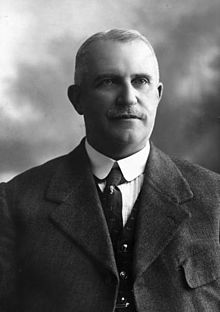- ↑ J.C.H. Gill (1979). "Appel, John George (1859-1929)". Australian Dictionary of Biography. Vol. 7.
- ↑ Appel George Archived 3 January 2015 at the Wayback Machine — Brisbane City Council Grave Location Search. Retrieved 26 June 2014.
- ↑ "Windermere (entry 600048)". Queensland Heritage Register . Queensland Heritage Council. Retrieved 1 August 2014.
External links
John Appel | |
|---|---|
 | |
| Member of the Queensland Legislative Assembly for Albert | |
| In office 5 February 1908 –19 March 1929 |